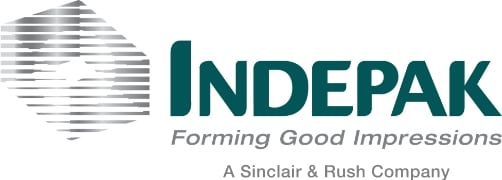Thermoform plastics can be used to create a myriad of products and packaging. At Indepak, we have spent the last 40 or so years designing and producing packaging and other thermoform plastic projects for our clients. Obviously, plastic is our passion, and as such, we’d like to share a few historical facts about this unique material.
1. Ancient Plastics 101
For most of us, the word “plastic” conjures up an image of a synthetically-made product, such as a water bottle. However, there are natural materials and polymers that have been used for centuries to create all sorts of projects. Natural rubber, for example, was used to create balls that were used as sports equipment by the ancient Aztecs and Mayans. In the Middle Ages, natural plastics derived from animal horns were used to create window panes. These are just two examples of how people used the natural elements around them to create the earliest forms of plastic products.
2. Vulcan, Charles Goodyear & Thomas Hancock
Natural rubber could be used to create many products, but it wasn’t particularly durable. Both Charles Goodyear, an American, and Thomas Hancock, an English engineer, were experimenting with ways to make natural rubber more durable. They both found that adding Sulphur to rubber would improve its durability, and Hancock named this process vulcanization, after Vulcan, the roman God of fire. While Hancock coined the name of the process, there is much debate as to which of these men actually first invented the process itself. Hancock filed his patent a mere eight weeks before Goodyear filed his patent, and many people contend that Hancock knew that adding Sulphur to rubber would be an ideal option, based upon seeing samples of Goodyear’s work.
3. How Plastics Saved Elephants
While many people worry that plastics are harming the planet, it can be said that the invention of one type of plastic saved the lives of many elephants. Inventor John Wesley Hyatt was the first person to create a practical type of artificial plastic. In 1866, he invented the process by which celluloid could be made. This new, durable plastic was then used to produce both billiard balls and piano keys, both of which previously were crafted out of ivory, or rather, the tusks of elephants.
4. Polystyrene, Bakelite & Thermoset Vs. Thermoform Plastics
Many people are confused when they hear the terms “thermoset plastics” and “thermoform plastics.” After all, they both sound very similar, however they have one main difference. A thermoset plastic cannot be melted down again and again and re-used to make new items. Thermoform plastics can be recycled and reused, and these are the types of plastics that we use at Indepak.
During the 19th and early 20th Centuries, chemists and engineers were busy creating all sorts of new synthetic materials. In 1839, a German apothecary discovered polystyrene. However, this thermoform plastic would not be mass produced until the 1930s and wouldn’t really come into vogue until the 1960s, when the first polystyrene cups were mass produced.
Thermoset plastics, on the other hand, began appearing on the scene in the early 1900s. Chemist Leo Baekeland developed the first highly marketed and used form of thermoset plastics, which was known as Bakelite and has been designated as the world’s first synthetic form of plastic by the American Chemical Company. While Bakelite had many practical uses as electrical insulation, it is more commonly known today as a collectible item. Many people collect Bakelite radios, kitchenware and even Bakelite toys.
5. Making Recycling Easier
Believe or not, conservation is by no means a modern concept. People have been recycling and reusing for centuries. In fact, the first paper recycling mill opened its doors in Philadelphia back in 1690. While most thermoform plastics are recyclable, it hasn’t always been easy for recycling centers to sort and separate these items. In 1988, resin identification codes were developed to make it easier for recycling center employees and consumers to better identify the various types of thermoform plastics.
For instance, if you look at a plastic water bottle, you will notice that it probably has a “1” listed on it somewhere, surrounded by a circle of arrows. This indicates that the material used to create this bottle was polyethylene terephthalate, or PET, which is a type of plastic accepted by all curbside recycling programs.
These are just a few of the great moments in the history of plastics. If you’d like some great thermoform plastic packaging to go along with this mini history lesson, give the team at Indepak a call today.





